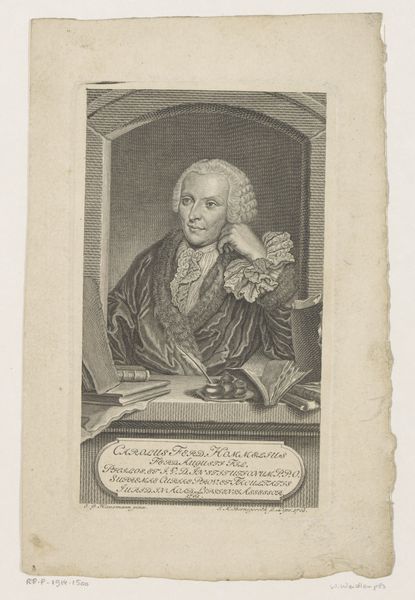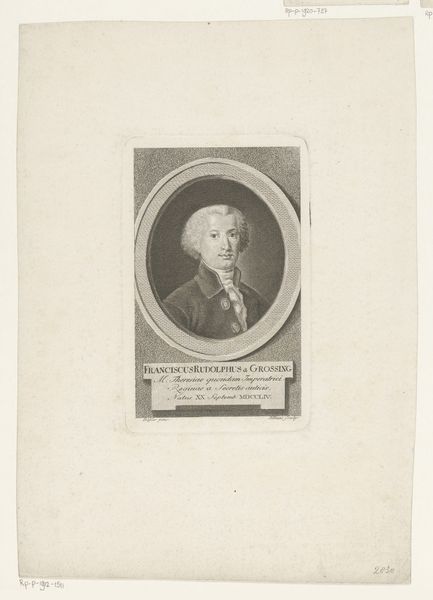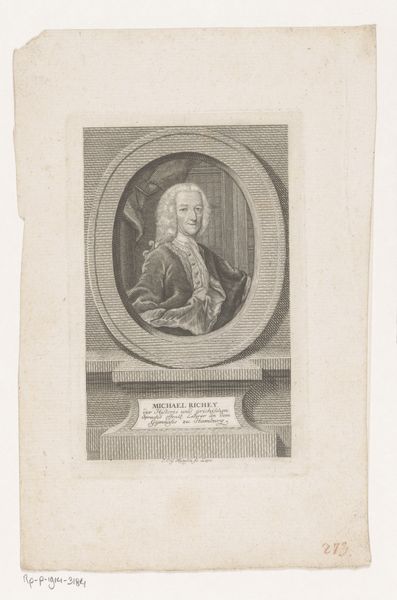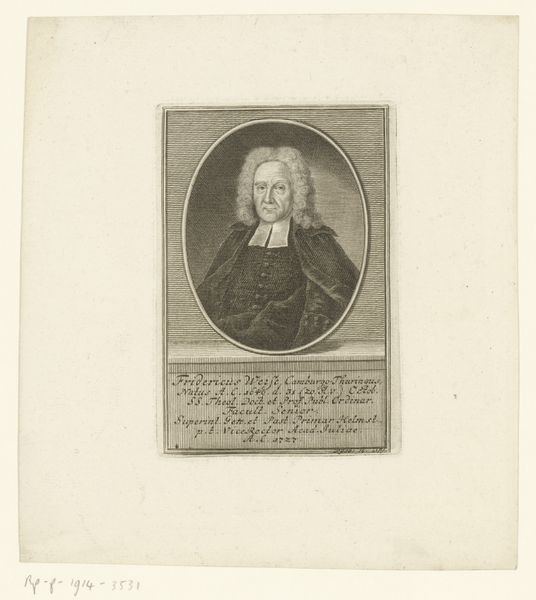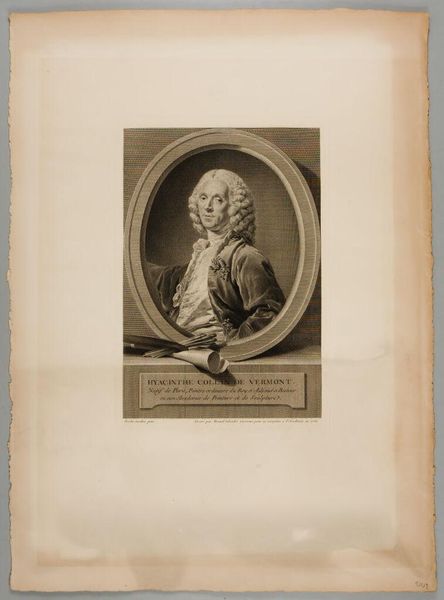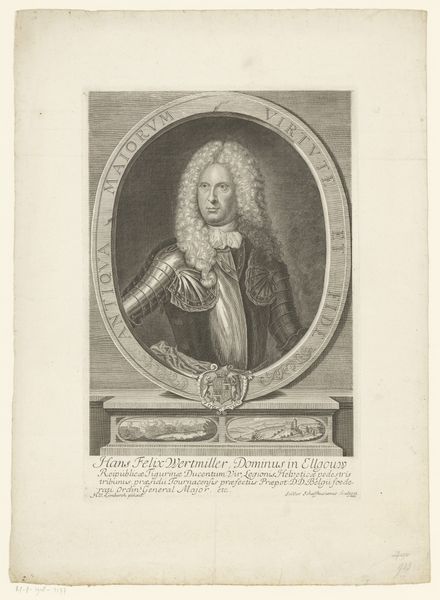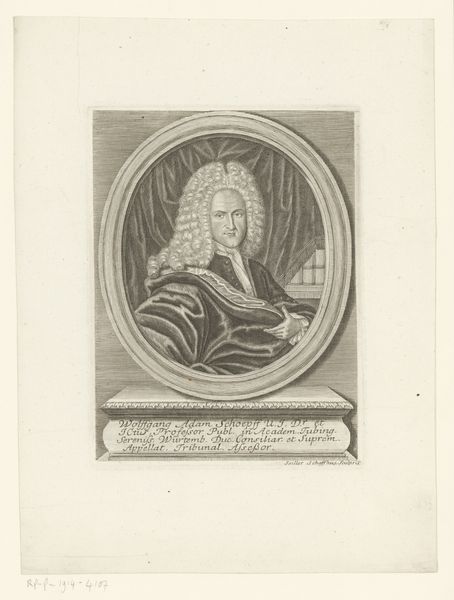
Dimensions: height 121 mm, width 75 mm
Copyright: Rijks Museum: Open Domain
Curator: Before us we have Etienne Fessard’s 1761 engraving, "Portret van Albert-François Floncel," currently held in the Rijksmuseum. It depicts its subject, Floncel, amidst symbols of his erudition. Editor: My first impression is of formality, and almost an exaggerated respect for the subject's intellect. Everything is so carefully rendered, from the curl of the wig to the precise lettering on the books. Curator: Precisely. It's a baroque portrait meant to project Floncel’s status, as a public intellectual. Engravings like this played a vital role in circulating images of important figures throughout the 18th century Republic of Letters. Note how the text inscribed below explicitly states that he "belonged to the most celebrated Accademia d’Italia." This engraving served to solidify his place in a broader intellectual network. Editor: The book open on the right is fascinating. The visible page reveals sections about philosophy, prudence, and rhetoric. These were clearly viewed as virtues crucial to effective leadership and judgment in his era, serving to idealize the sitter by portraying him through those attributes. Curator: Absolutely, the surrounding symbolism isn’t arbitrary; everything supports a carefully constructed narrative. The coat of arms on the lower left, for instance, adds to his pedigree and nobility, rooting him in a tradition of family and service. Even the frame encompassing Floncel feels symbolic; his name wraps around its entirety. Editor: Also the books are strategically placed, hinting at Floncel's wisdom and scholarship without necessarily inviting close scrutiny of the specific content. They’re almost props. Curator: To an extent, yes. It's less about showing he has read every single book and more about communicating intellectual gravitas. The medium itself, engraving, allowed for wide distribution and accessibility compared to painted portraits, impacting how elites like Floncel projected themselves publicly. Editor: Looking at it now, the entire piece reads as a monument to enlightenment ideals and a faith in human reason as the cornerstone of progress. Thank you for providing some important historical background to the piece. Curator: My pleasure. It is crucial to look at these works as artifacts intertwined with power structures of the time.
Comments
No comments
Be the first to comment and join the conversation on the ultimate creative platform.



